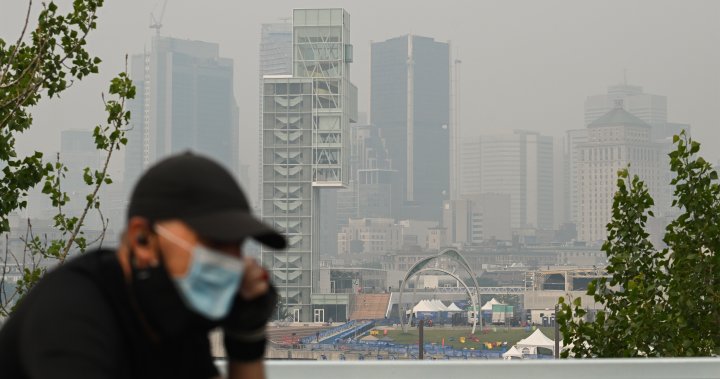The death of a nine-year-old B.C. boy from asthma worsened by wildfire smoke serves as a tragic example of the dangers of poor air quality for individuals with underlying respiratory and cardiac conditions, according to experts. Dr. Anne Hicks, clinical lead of the children’s environmental health clinic at the University of Alberta, states that there is a clear increase in asthma exacerbations during periods of wildfire smoke pollution. On top of asthma, research has linked wildfire smoke to more hospital visits for individuals with lung conditions, viral infections, pneumonia, chronic obstructive pulmonary disease (COPD), heart attacks, and strokes. To protect yourself and your children, there are several steps you can take.
Firstly, utilize the Air Quality Health Index (AQHI) provided by Environment Canada. This online platform allows individuals to check the level of pollution in their communities. The index ranges from 1-3 (low risk), 4-6 (moderate risk), 7-10 (high risk), and over 10 (very high risk). However, individuals with asthma or other chronic conditions, as well as infants, young children, pregnant individuals, and seniors, may be affected by smoke and air pollution even at lower levels than those who are healthier. Knowing the level of air pollution that affects you can help you modify your activities accordingly.
If the air quality is poor, it is important to stay indoors as much as possible with the windows closed. Using an air purifier can also help improve indoor air quality. A high-quality air purifier should have a HEPA (high efficiency particulate air) filter or a MERV (minimum efficiency reporting value) rating of at least 13. If purchasing a high-quality air purifier is not feasible, you can create your own using a box fan, MERV 13-rated furnace filters, duct tape, and cardboard. Instructions can be found on YouTube.
During hot weather, be mindful of heat risks. If you are indoors with closed windows and no air conditioning, make sure you do not overheat. Heat-related exposure, such as heat exhaustion or heat stroke, can be dangerous, especially for children. Heat can also trigger asthma attacks. If it is hot inside your home and the air quality outside is poor, consider going to a community cooling center, shopping mall, or library.
If you need to be outside, wearing a mask can be a helpful tool to mitigate harm. Surgical masks can filter out up to 20% of smoke and particulate matter, while well-fitting N95 respirators can filter out up to 80%. Masks are available in kids’ sizes with ear loops or around-the-head elastics.
It is crucial for individuals with asthma to ensure their condition is well controlled. This involves having a supply of both “controller” medications (usually containing an inhaled steroid) and “reliever” medications (bronchodilators that relax the muscles in the lungs and widen the airways). Those with asthma should always carry their reliever inhalers with them and seek medical attention if they have any concerns or experience severe symptoms.
Overall, taking these precautions can help protect individuals with respiratory and cardiac conditions from the dangers of poor air quality caused by wildfire smoke.

